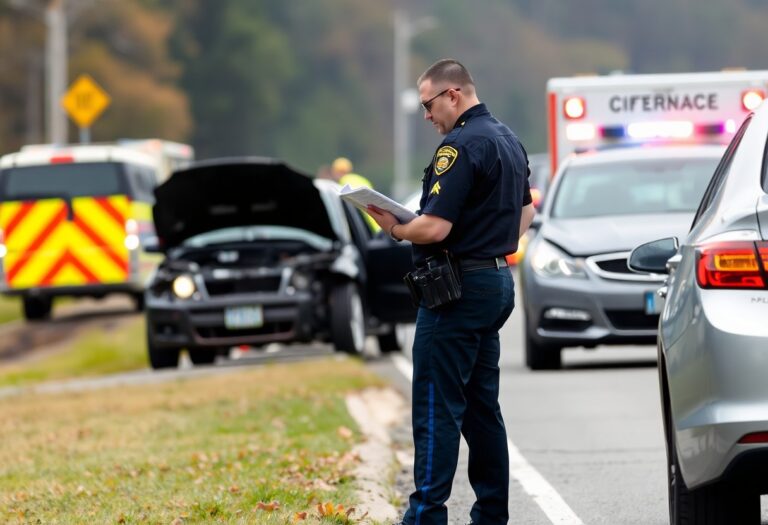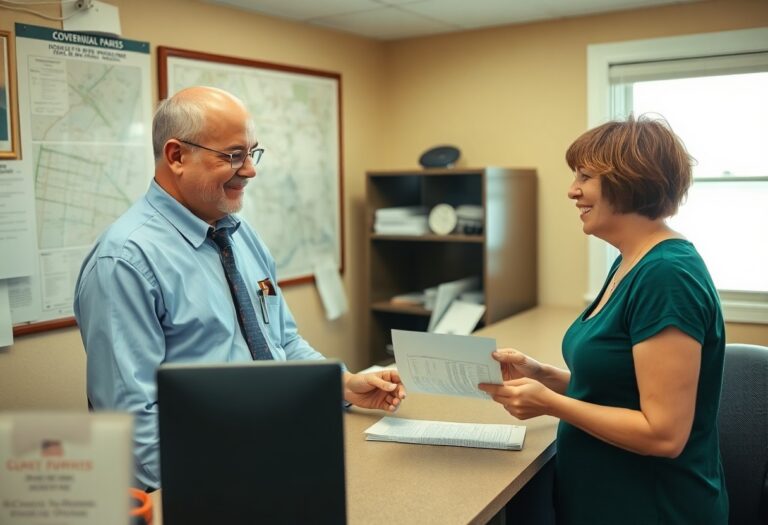Archer County provides you with the necessary resources to obtain your car accident report efficiently and effectively. Whether you’ve recently been involved in an accident or need documentation for insurance claims, understanding the process is imperative. With clear steps available online and in-person options at local offices, you can access your report quickly to ensure that you get the support you need. This guide will walk you through the simple procedures to help you regain peace of mind.
Navigating the Maze: Where to Find Your Accident Report
Finding your accident report in Archer County can feel like navigating a maze, but it’s straightforward once you know where to look. Your report is typically filed with local law enforcement and can be accessed through multiple channels. It’s imperative to check both physical locations and online resources, which can save you time and potentially provide quicker access to the information you need.
Official Agencies: Who’s in Charge?
The responsibility for filing and maintaining accident reports falls primarily to the local law enforcement agencies—typically the Archer County Sheriff’s Office or the Texas Department of Public Safety (DPS). Depending on where the accident occurred, you may need to contact one or both. Be sure to provide specific details about the incident, such as date, time, and location, to streamline the process.
Digital Resources: Accessing Reports Online
Many agencies now offer online platforms for obtaining accident reports, which can be a huge time-saver. The Archer County Sheriff’s Office has an online portal where you can request your report by entering your incident number. Alternatively, the Texas Department of Public Safety (DPS) provides an option to access crash reports electronically through their website. Make sure you have your information handy, as it can make the retrieval process smooth and quick.
For more efficient online access, you can visit the Texas DPS Crash Report website where you’ll be prompted to enter your details. Bear in mind that there might be a nominal fee for obtaining your report online, usually around $6. This small cost can save you the hassle of visiting government offices in person. Make use of this digital resource, as it’s designed to enhance your experience by offering a user-friendly interface to quickly get the information you need without lengthy wait times.
Decoding the Report: What Information You’ll Encounter
Your car accident report is a detailed document that encapsulates the entire incident, including the surroundings, vehicles involved, and the aftermath. Typically, you will find sections covering the date, time, and location of the accident, along with a narrative describing the events leading up to the crash. In addition, diagrams or sketches may illustrate how the vehicles were positioned post-collision, while witness statements offer third-party perspectives. Familiarizing yourself with these components is key to understanding how all facts interconnect and impact any claims or legal proceedings.
Key Details: Understanding Essential Data Points
Essential data points in your accident report include the names of involved parties, insurance information, and vehicle details such as make, model, and license plate numbers. Additionally, the report will outline citations issued and any observable damages pertaining to the vehicles and property. These facts serve as a foundation for further action, whether you’re filing an insurance claim or seeking legal recourse.
The Significance of Each Section: More Than Just Numbers
Each section of your accident report is more than a mere collection of numbers and details; it conveys the broader implications of the incident on liability and insurance claims. For example, the narrative may indicate who was at fault, which plays a critical role in determining liability and facilitating settlements. Additionally, any citations mentioned can significantly influence your insurance premiums and the outcomes of potential court cases. Understanding the weight of this information allows you to take strategic steps in resolving subsequent issues.
In recognizing that each section carries substantial implications, you can better navigate the aftermath of an accident. For instance, if a citation is noted in your report, you may want to consult an attorney specializing in traffic cases to explore your options. Similarly, a clear sketch of the accident scene can be invaluable for visualizing how the collision occurred, potentially aiding both your insurer and any legal team. Grasping the importance of these details empowers you to make informed decisions regarding your next steps, whether that involves negotiations or court filings.
Common Pitfalls: Missteps in Accident Report Retrieval
Retrieving your accident report might seem straightforward, yet several common pitfalls can obstruct your progress. Missing deadlines, neglecting to collect necessary identification, or providing incomplete information can significantly delay your ability to access the report. Each of these missteps can lead to frustration and potentially prolonged legal issues, underscoring the need for attention to detail during the retrieval process.
Frequent Errors: What Goes Wrong?
Errors frequently stem from a lack of awareness regarding the requirements for obtaining your report. Expired identification, incorrect request forms, and submitting your application at the wrong office can result in unnecessary delays. Always double-check that you’re using the right channels and providing accurate details to prevent these common mistakes.
Legal Implications: When Reports Matter Most
Your accident report serves as a vital piece of documentation during insurance claims and legal proceedings. These reports hold valuable information, such as the official findings of law enforcement, which can significantly influence the outcome of your case. In disputes over liability or damages, having access to an accurate and timely report can mean the difference between a favorable resolution and unmet financial obligations.
In high-stakes situations like personal injury claims or insurance disputes, the details within your accident report can affect both the settlement and potential court outcomes. Insurance companies rely heavily on the information detailed in these reports to assess claims. Additionally, if court action is necessary, the report may be presented as evidence; thus, inaccuracies or delays in obtaining the report could hinder your chances of receiving fair compensation. You want to ensure that you address any discrepancies or concerns as soon as possible to protect your rights effectively.
Your Rights and Responsibilities: Knowing What to Expect
Understanding your rights and responsibilities after a car accident is important for protecting yourself. You have the right to obtain a copy of your accident report, and law enforcement is required to provide it to you within a reasonable timeframe. Additionally, you must ensure that your claims are accurately represented and that you follow any legal guidelines set forth during the recovery process. Being informed will help you navigate through your options effectively, especially if you intend to file an insurance claim or pursue legal action.
Privacy Considerations: Keeping Your Data Safe
Your personal data may be included in the accident report, making it vital to handle your information with care. Be cautious when sharing your report with others. You should also verify the legitimacy of anyone requesting your data and only provide it to trusted entities, such as your insurance company or a legal representative. Keeping track of who accesses your report helps maintain your privacy and reduces the risk of identity theft.
Timeline Expectations: How Long Will It Take?
Receiving your accident report can vary depending on the circumstances of the incident and the processes of local law enforcement. Typically, you can expect to wait between 5 to 10 business days for the report to become available after the incident has been documented. However, if the accident involves fatalities or significant investigations, you may face delays. Staying in communication with law enforcement can provide updates on the status of your report, ensuring you remain informed throughout the process.
Once you submit a request for your accident report, the response time can differ based on location and the department’s workload. In Archer County, officers may prioritize higher priority cases, which could extend the timeline you experience. Delays may also occur if additional review is needed or if involved parties contest information on the report. Being proactive in checking the status and knowing whom to contact for updates can streamline your experience in obtaining the report.
Expert Insights: Tips from Lawyers and Insurers
- Consulting with an attorney can enhance your understanding of the legal process involved in car accidents.
- Insurers recommend documenting all aspects of the accident, including photos and witness statements, to support claims.
- Filing your report promptly helps establish a clear timeline of events.
- Understanding your insurance policy can protect your rights during negotiations.
Any missteps in handling your accident report can complicate matters, making it vital to follow these insights for a smoother process.
Wisdom from the Field: Learning from the Experts
Attorneys often emphasize the importance of acting quickly after an incident. They advise you to gather eyewitness statements and take photographs immediately, as details can quickly fade. Insurers echo this sentiment, stating that comprehensive documentation strengthens your position during the claims process and can significantly affect the outcome in your favor.
Best Practices: Ensuring a Smooth Process
Adhering to best practices can simplify your accident report retrieval. First, ensure you have all necessary information about the accident at hand, including the police report number and location details. Second, contact your insurance provider directly after the incident, as they can guide you on filing the appropriate claims and provide assistance with retrieving the report. Lastly, stay organized with your documents, and make copies of everything for your records.
To execute the best practices effectively, approach each step systematically. Gather your insurance details before making inquiries, and prepare any questions you may have about the process. Engaging with your insurer early on helps you understand timelines for report retrieval. Additionally, keep in mind that follow-ups can be crucial; don’t hesitate to reach out to the relevant authorities or your insurer multiple times to ensure progress is being made. The more proactive you are, the smoother your experience will likely be.
Conclusion
Considering all points, accessing your car accident report in Archer County, Texas, is designed to be a straightforward process for you. By understanding the necessary steps and utilizing available resources such as local law enforcement and online databases, you can easily obtain the information you need. This knowledge empowers you to make informed decisions following an accident and ensures that you have the proper documentation to support any claims or inquiries you may have.













